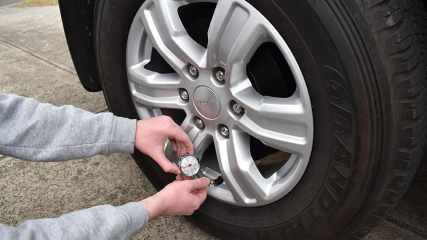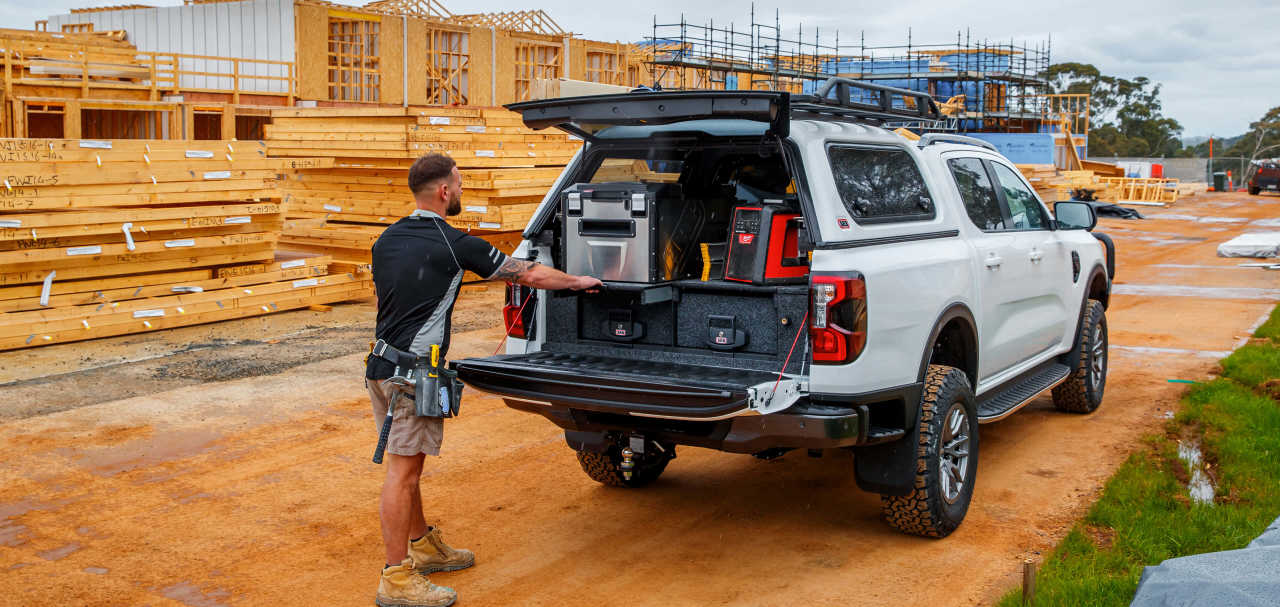How to increase your ute, van or SUV's GVM rating
By Mark Oastler · 11 May 2020
Driving an overloaded vehicle is dangerous and illegal. Beyond the risks to your personal safety and that of other road users, it can also extract a heavy price in mechanical wear and tear – and potential failure. If caught, you face heavy fines and your vehicle could be impounded by police or transport authorities. And any insurance claims can be rejected by your insurer.So, overloading is a serious issue, yet it’s probably widespread simply because many vehicle owners are unaware of the problem. So, how do you know if your vehicle is overloaded? And what can you do about it? By following these steps, you can ensure that your ute, commercial van or SUV is on the right side of the law. And it all starts with three letters – GVM.Every vehicle has a GVM rating. It’s an acronym of Gross Vehicle Mass which is the maximum your vehicle can legally weigh when fully loaded, as specified by the manufacturer. You’ll find this GVM figure in the owner’s manual or on the vehicle’s weight placard, which is usually displayed in the driver’s door opening.So, GVM is the sum of the vehicle’s kerb weight (how much the base vehicle weighs with all fluids including a full tank of fuel) plus any accessories (bull bars, roof racks, tow bars etc) plus its payload, which is how much weight you can legally add on top of the kerb weight and accessories. So that’s everything you load into the vehicle, including driver and passengers.But that’s not all. If you’re towing, GVM also includes the trailer’s tow-ball download. And if your vehicle is a cab-chassis design, the weight of the tray or body installed on the back is also included in the GVM figure. So, all of this can easily tip the scales too far.For example, let’s say your new cab-chassis light commercial has a 3000kg GVM, which when you deduct its 2000kg kerb weight leaves a payload capacity of 1000kg. That’s one tonne and that’s plenty, you might say.However, after you install some accessories like a steel drop-side tray (300kg), bull bar and side steps (150kg) plus tow bar (50kg), which all contribute to the GVM, you’ve already effectively halved your payload capacity to 500kg.Then get two big blokes to climb aboard (200kg) and throw in their tools of trade (100kg) and you’ll only have 200kg of legal payload remaining. And that’s before what many would consider to be the ‘real’ payload like building materials, landscaping supplies, plant and equipment etc. So, you can see from this example how easy it is to exceed your vehicle’s GVM.And this problem is not exclusive to utes and cab-chassis vehicles. It’s equally relevant to hard-working commercial vans equipped with roof racks, ladders, internal storage systems etc. And SUVs loaded with aftermarket accessories, particularly heavy-duty models which often have big caravans, boat trailers or horse floats in tow.The easiest way to check is by using your nearest public weighbridge. They’re easy to find with a quick search online and they generally charge moderate fees. The design of public weighbridges can vary from the traditional single deck or multiple decks with an operator on site, to self-serve 24/7 kiosks with automated credit card payment.Checking your vehicle’s GVM is as simple as positioning all four wheels on the weighing deck with a full tank of fuel, no payload and no driver. If it’s over the GVM rating displayed on the vehicle weight placard, then Houston, we have a problem.However, even if it’s below the GVM rating, you’re still not in the clear because you also need to weigh it with the payload it usually carries. For example, if it’s a tradie’s workhorse, that must include driver and all crew, tools and equipment. If it’s a weekend escape machine, that’s with driver and all passengers, luggage and camping gear. You may then discover it’s above the GVM rating.In either case, if you regularly tow something when your vehicle is loaded like this (plant, caravan, boat trailer, horse float etc) you also have to include your trailer’s tow-ball download (TBD) in the GVM figure. This can also be measured by driving your vehicle onto the weighing deck, with your trailer in tow but without its wheels on the deck. This check could reveal that your vehicle and trailer combination is also overweight (see GCM later in this article).There’s also maximum or 'gross' loadings that your vehicle’s front and rear axles can legally carry, as specified by the manufacturer. You’ll find these figures in the owner’s manual too. The combined gross axle weights usually exceed the GVM to provide a safety margin. Even so, it’s important to know that your vehicle’s GVM is distributed correctly between front and rear axles for safe and efficient operation. These weights are measured by firstly stopping with only the front wheels on the weighing deck and then with only the rear wheels on the weighing deck.Theoretically at least, the easiest and most inexpensive remedy for overloading is to reduce the vehicle’s weight. However, that’s often easier said than done, as most accessories are either crucial for working roles (tool drawers and cabinets, ladder racks etc) or recreational use (long-range fuel tanks, bull bars, roof racks, winches etc). And you can’t simply dump your crew either!So, if you can’t reduce your vehicle’s weight, the only alternative is to increase its GVM rating.There are numerous aftermarket suppliers that offer GVM upgrades. Reputable ones have done the hard yards in terms of testing and engineering analysis to ensure that your vehicle’s OEM components are not compromised and their work is backed by government-approved certification. So, don’t waste your time and money, nor risk your safety, with a backyard operator who can’t provide the same.From a legal standpoint, there are two ways to do this. If you’re buying a new vehicle and getting a GVM upgrade before its road registered for the first time, the installer (if approved by the Commonwealth Department of Infrastructure and Regional Development) is authorised to fit a new compliance plate to the vehicle. That means it can be legally registered and driven in all states and territories of Australia with the higher GVM rating.For vehicles that are already road registered, the approval process for GVM upgrades is a state/territory responsibility, with protocols that vary according to the different road transport authorities. The GVM upgrade may have to be inspected by an authorised automotive engineer in the state/territory where the vehicle's registered before being issued with a compliance certificate.If the vehicle is later sold interstate, it may need to be inspected again by an authorised automotive engineer before being granted road registration in another state or territory. A reputable installer will be able to advise on all legal requirements for GVM upgrades to new and used vehicles.A quality installer should firstly confirm your weighbridge findings by doing its own assessment of your vehicle’s front and rear axle weights and individual wheel weights (aka corner weights). This will allow the installer to advise on the best course of action, in not only increasing the GVM but also optimising front and rear axle loadings.A typical GVM upgrade, depending on vehicle type, can range from around 300kg to more than 600kg in some cases. They typically consist of uprated front and rear springs and shock absorbers, which replace the original bolt-on equipment with no chassis modifications required. They can also result in a slight increase in ride height to provide more body-tyre clearance and, in some cases, harder compound brake pads are included.Shop around to get more than one assessment (ideally two or three for comparison) and don’t be afraid to ask questions. A quality supplier will be more than happy to answer them. And always make sure they have the government certification mentioned earlier and back their products with a nationwide warranty.Another important acronym in this discussion is Gross Combination Mass (GCM) which is the maximum weight allowed for your vehicle and trailer combined, as specified by the tow vehicle’s manufacturer. You could be excused for thinking that because your vehicle has a standard GCM rating of say 6000kg, then a 300kg GVM upgrade is going to increase its GCM by the same amount, right? Wrong. A GVM upgrade does not increase the GCM rating. However, some states do permit GCM upgrades, which require their own specific engineer analysis and certification.In most cases, a quality GVM upgrade with the correct certification will not void your vehicle’s warranty. However, it’s always best to check with both the installer and your vehicle’s manufacturer that your warranty will not be affected. While you’re at it, also consult your insurance company to determine if any amendments are required to your policy to ensure there are no GVM-related problems if you make a claim.

.jpg)

.jpg)

.jpg)
.jpg)
.jpg)
.jpg)

